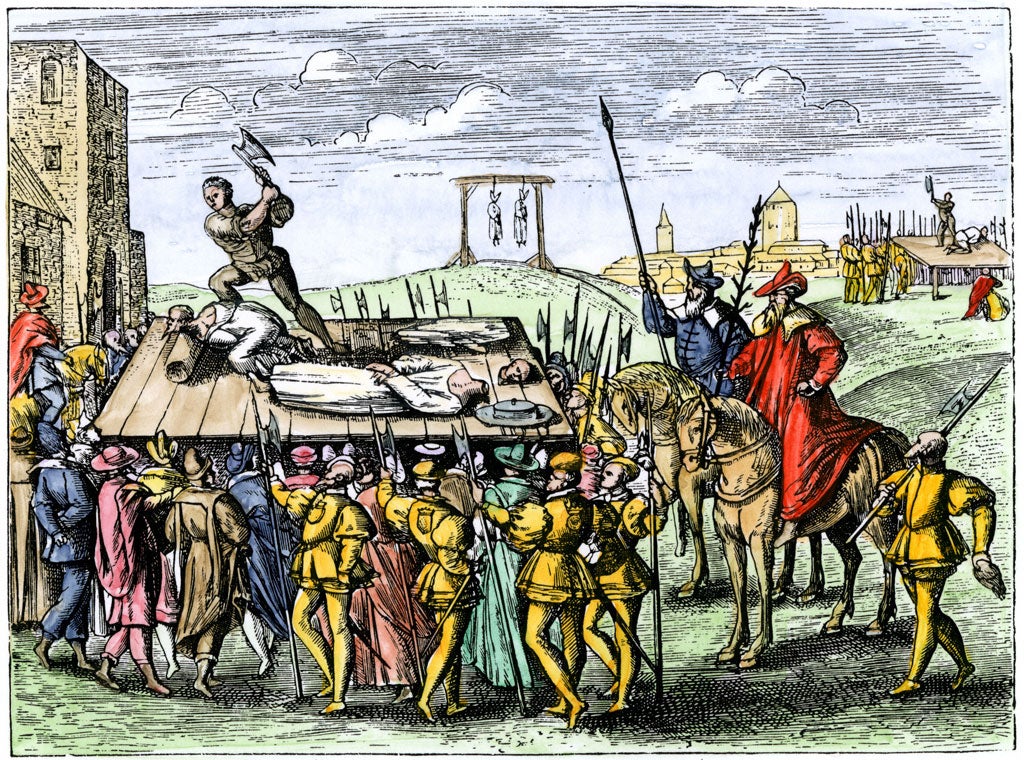Saints, Sacrilege and Sedition: Religion and Conflict in the Tudor Reformations, By Eamon Duffy
An erudite iconoclast, this historian overturns assumptions about the beliefs of the English in the age of holy wars.

Even amid north Norfolk's extraordinary treasury of medieval churches, Saint Peter and Saint Paul's at Salle (pronounced Saul) stands out as a jewel. Its 126-foot tower dominates the gently rolling landscape north of the market town of Aylsham. I've been there many times, and am always silenced by its sheer scale, austere beauty, and by its survival since the early 15th century in spite of the Reformation and the disappearance of its parish.
Or, at least, that is what I always thought had happened. More cathedral than church, with seating for 500-plus, it stands amid a handful of isolated houses. "Shifts of population," I can hear myself saying to friends I have taken there.
The note of authority in my voice, echoing in the vast silence of a church where one legend suggests Anne Boleyn may have been buried, sounds foolishly shrill now that I have read Eamon Duffy's Saints, Sacrilege and Sedition. In a chapter dedicated to this church, he explains that it was never intended for community use alone, and that its vast open nave was once filled not by local mass-goers but by the gatherings, altars, processions and liturgies of the seven medieval guilds, dedicated to the Virgin Mary, Saints Thomas, Paul, Margaret, John the Baptist and others, to which it played host.
Now I need to rethink my impression of the place. Duffy, professor of the history of Christianity at Cambridge, has made a habit of challenging conventional wisdom when it comes to Reformation history. His award-winning 1992 book The Stripping of the Altars overturned the prevailing view that in the years leading up to Henry VIII's break with Rome, English Catholicism was a decaying, if not spent force, and that the new Protestantism was quickly established. Here, in a series of essays joined by the common theme of challenging readers to look more carefully behind the stereotypes of Reformation history, Duffy takes up that narrative again.
As well as his account of Salle – in which he carefully points out the fragments that have survived in the church of medieval Catholicism – he also takes a fresh look at some of the key players. Reginald Pole, the last Catholic Archbishop of Canterbury, a distant relative of the royals and a cardinal before he was even ordained, is usually portrayed as co-worker with "Bloody" Queen Mary in her stop-at-nothing attempts to "restore" Catholicism. Duffy offers a much more nuanced picture, both of their relationship, and of the extent to which they had to put the clock back at all.
In 1549, Pole very nearly became the second Englishman to be elected Pope (the other being Adrian IV in the 12th century), but another Reformation figure, Cardinal John Fisher can claim a loftier title. He remains the only Catholic cardinal to have died a martyr's death, executed on the orders of Henry VIII in 1535. Fisher tends to be relegated to the part of good, pious but unworldly sidekick to Thomas More in their battle with the king in defence of the papacy, but Duffy's account demands a reappraisal.
Even in the potentially disjointed format of a collection of essays, there is something compelling and even thrilling about Duffy's combination of cutting-edge historical scholarship and effortless prose. At the heart of the story he tells is an account of the deep, deep roots that Catholicism had in England before, during and for a long time after Henry's decision to dispense with Rome. As one who grew up Catholic at the tail end of a 400-year period when my co-believers were routinely persecuted and regarded as somehow foreign, or unEnglish, it is remarkable to learn how much my faith is home-grown, part of the landscape, and of the nation's enduring religious sensibility, even if most traces of that have been obliterated and then denied. In Duffy's bottom-up approach to history, as in the fragments of stained glass that have survived in the otherwise clear panes in Salle church, there is a much bigger, bolder story.
Peter Stanford's 'The Extra Mile: A 21st-century Pilgrimage' is published by Continuum
Subscribe to Independent Premium to bookmark this article
Want to bookmark your favourite articles and stories to read or reference later? Start your Independent Premium subscription today.

Join our commenting forum
Join thought-provoking conversations, follow other Independent readers and see their replies